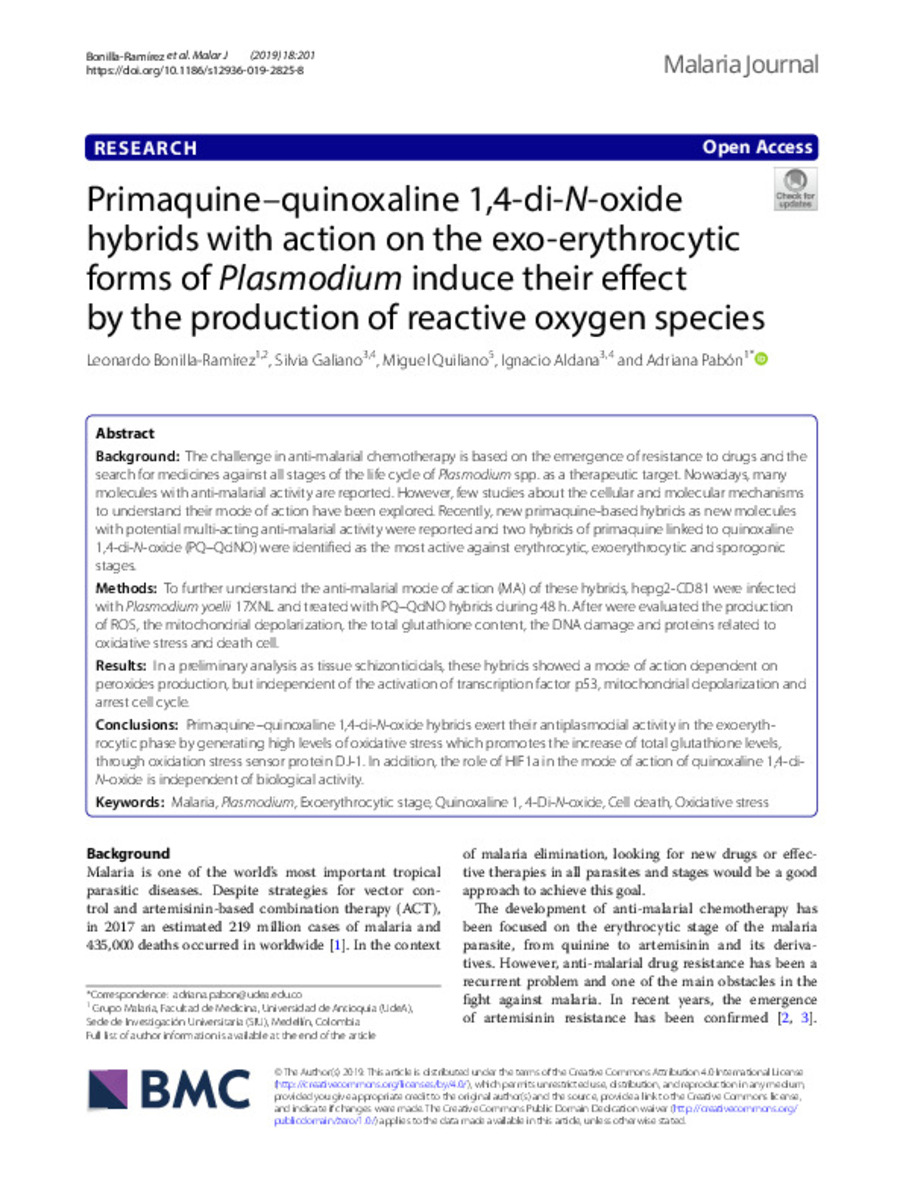Primaquine–quinoxaline 1,4‑di‑N‑oxide hybrids with action on the exo‑erythrocytic forms of Plasmodium induce their efect by the production of reactive oxygen species
Palabras clave :
Malaria
Plasmodium
Exoerythrocytic stage
Quinoxaline 1
4-Di-N-oxide
Cell death
Oxide stress
Fecha de publicación :
2019
Editorial :
Springer Science and Business Media LLC
Nota:
This article is distributed under the terms of the Creative Commons Attribution 4.0 International License
(http://creativecommons.org/licenses/by/4.0/), which permits unrestricted use, distribution, and reproduction in any medium,
provided you give appropriate credit to the original author(s) and the source, provide a link to the Creative Commons license,
and indicate if changes were made. The Creative Commons Public Domain Dedication waiver (http://creativecommons.org/
publicdomain/zero/1.0/) applies to the data made available in this article, unless otherwise stated.
Cita:
Bonilla‑Ramírez, L. (Leonardo); Galiano, S. (Silvia); Quiliano, M. (Miguel); et al. "Primaquine–quinoxaline 1,4‑di‑N‑oxide hybrids with action on the exo‑erythrocytic forms of Plasmodium induce their efect by the production of reactive oxygen species". Malaria Journal. 18 (201), 2019,
Aparece en las colecciones:
Estadísticas e impacto
0 citas en

0 citas en

Los ítems de Dadun están protegidos por copyright, con todos los derechos reservados, a menos que se indique lo contrario.







